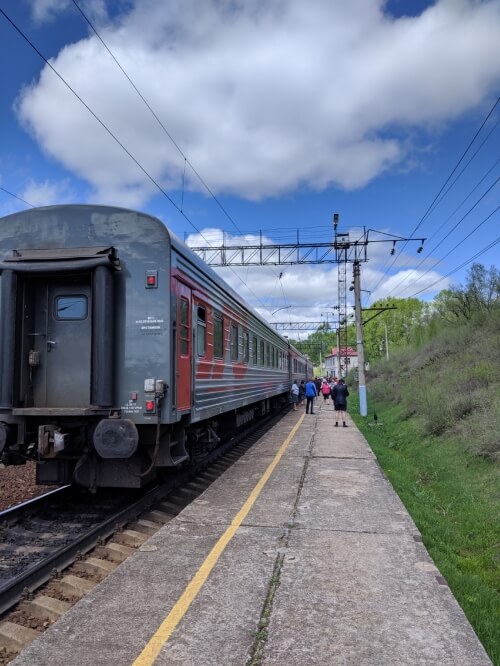
This is my three-week Trans-Siberian itinerary. Last week I finished quite literally the trip of a lifetime: I travelled by train from Vladivostok to Moscow over the course of three weeks. I plan on posting a lot about this journey (I wrote seven blog posts on the trip alone) but I wanted to capture some thoughts on the itinerary before too much time had passed. Subsequent posts will go into more detail about other aspects but in this post I want to focus on the itinerary itself.
For more details on the itinerary and advice for planning your own, scroll down to the bottom. For a stop-by-stop description of my trip, keep reading.
My three-week Trans-Siberian itinerary in detail
Flying to Vladivostok
I flew out to Vladivostok via Moscow, taking my first-ever internal Russian flight (scary!). But I have to say it was perfectly comfortable. I flew with Rossiya and we were given food, drinks, a blanket and a TV screen (although the touch-screen on mine was so unsensitive, I needed a hammer just to press a button). No issues whatsoever.
Starting the Trans-Siberian: two days in Vladivostok
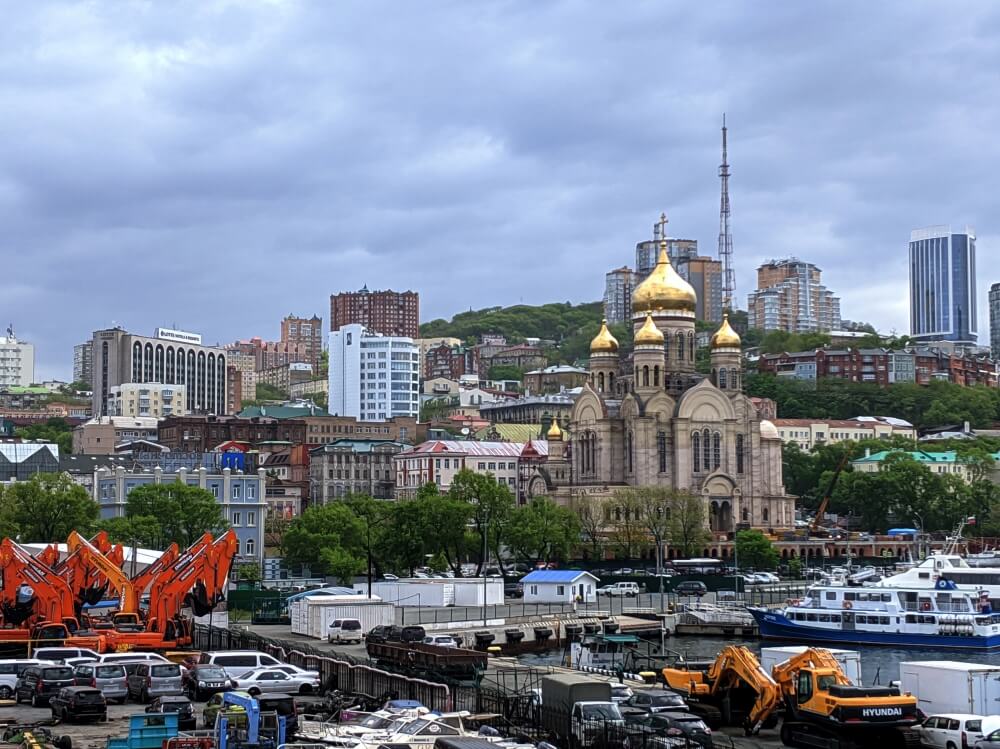
The hills of Vladivostok
In reality, my ‘two days’ in Vladivostok very quickly became two half-days in Vladivostok. I definitely underestimated the impact jetlag would have on me and I ended up ‘napping’ for around six hours on my first day in the city. Overall, I felt like I still got a good impression of the place, but it would have been nice to have had more time there.
I really liked Vladivostok; its location on the coast, its sprawling hills and its clear East-Asian influence makes it feel very unique as a Russian city. I was quite lucky with the weather (it’s well known for its fog and rain) and in addition to a lot of walking, I made it to a handful of the city’s best spots (Zarya Contemporary Art space, the Tokarevsky Lighthouse and the Golden Bridge viewpoint.)
Read more:
Why you should add Vladivostok to your Trans-Siberian itinerary
Train journey from Vladivostok to Ulan-Ude
From Vladivostok, I jumped on a 63-hour train journey to Ulan-Ude. That’s right – 63 hours. I got on at 19.10 on Wednesday evening and arrived in Ulan-Ude Saturday morning at 08.30 (with two hours’ time difference).
So how was the journey? It was actually really fine.
As this journey was going to be the longest, I booked myself into second class on the #1 train (also called the Rossiya and one of the fastest trains) which meant I was in a closed cabin for four people. Passengers came and went (I even had the cabin to myself for an entire night) but I really enjoyed the experience. I wrote, read, chatted to other people, and spent literally hours just staring out of the window admiring the scenery. We had several stops of around 30 minutes in larger towns (like Khabarovsk, Belogorsk, Chernyshevsk) which fell at around 7am and 7pm each day, which worked out well.
The scenery on the second day on the train, from Magdagachi to Chita, was particularly impressive – we went hours without seeing a road, any houses or buildings or signs of life at all. I was looking out at valleys and fields wondering whether anyone had ever set foot there, realising that the mountains and hills I was looking at probably didn’t even have names. It truly felt like untouched land. This was probably the stretch of the entire journey I enjoyed the most.
Republic of Buryatia: a day in Ulan-Ude
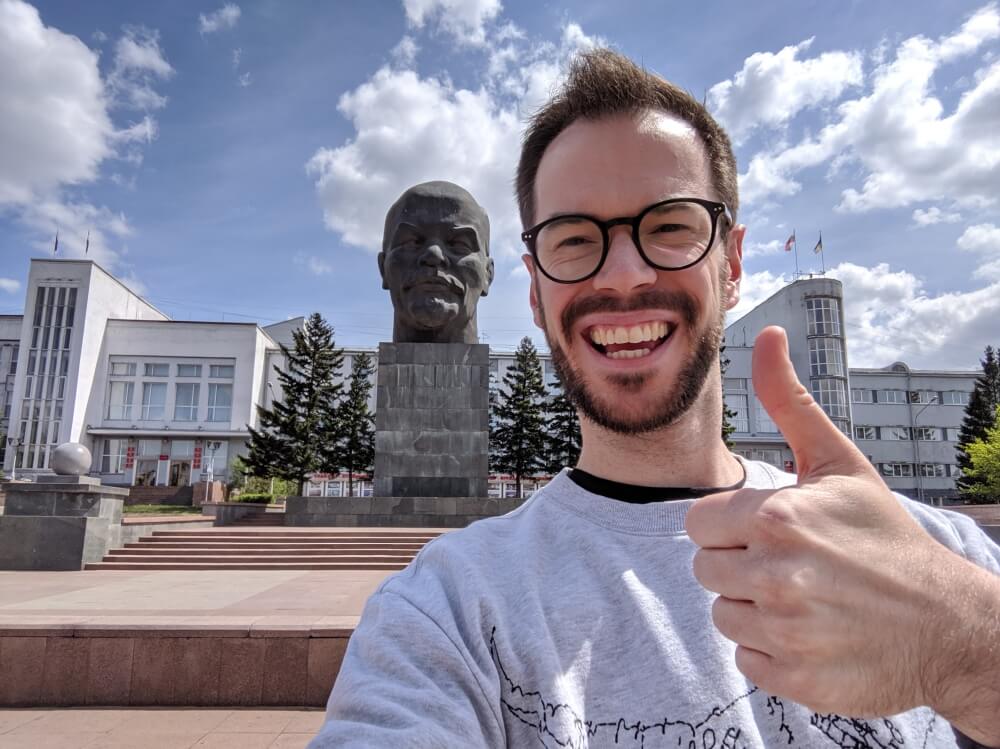
Ulan-Ude is home to the largest statue of Lenin’s head
The city of Ulan-Ude made the perfect one-day stop on the trip. The city centre is small, compact and walkable so it’s easy to get a good lay of the land and the atmosphere there is very relaxed. Being home to the Buryats, an Asian people closely related to the people of Mongolia, Ulan-Ude definitely has a very Asian feel to it, especially with the Datsan located in the hills above the city. But it felt like Russian and Buryat culture mixed effortlessly.
I had exactly 23 hours in the city which felt like the perfect amount of time to take a good look around, have some great food and stretch my legs (literally) with a run. However, it turns out Ulan-Ude is an ideal jumping off point for several really interesting-looking excursions (many of which are offered by UUHostel). I really wish I’d had two more days here to venture out to the Eastern shore of Lake Baikal (more below).
Read more:
23 hours in Ulan-Ude: what to do and why you should stay longer
The train from Ulan-Ude to Irkutsk
This train journey was just eight hours but it really was incredibly beautiful. To the right, there was the bright blue waters of Lake Baikal and to the left the Eastern Sayan mountains, still topped with snow. I spent a lot of time attempting to get photos that did it justice. In the end, I just gave up and enjoyed the scenery. We had a 20-minute stop at Vydrino, which has a beautiful natural backdrop.
After Slyudyanka (coming from the East), the track suddenly and dramatically rises, giving you even more amazing views of the lake from the hills. Be prepared to get out of your seat and stalk the carriage like a madman trying to get half-decent photos.
Listvyanka & Lake Baikal
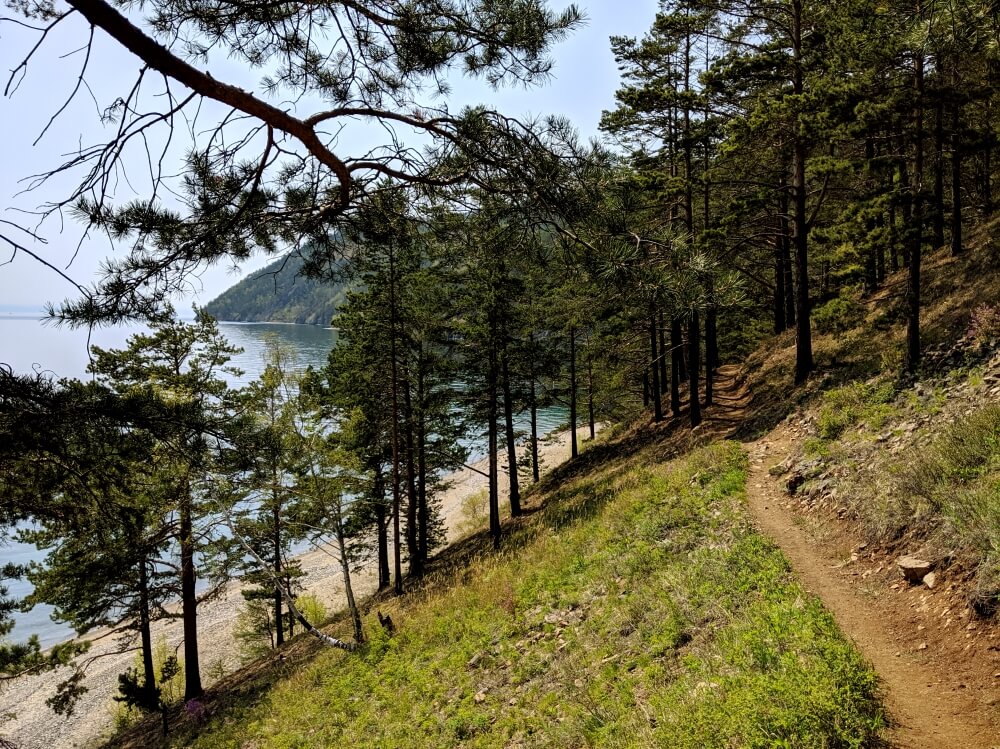
View from the Great Baikal Trail
The longest stop on my whole trip was the time I spent in Listvyanka – two and a half days. I enjoyed myself here, but to be honest, it definitely wasn’t the highlight of my trip, which Lake Baikal is often billed to be. My visit was definitely out of season – several boats weren’t running yet and the weather was very mixed. While the rest of my trip the weather was generally very sunny and around 20-22 degrees, Baikal was much colder – my second day there was 4 degrees and rain/sleet. The weather wasn’t necessarily a huge problem, but I opted not to go out hiking on the second day as the route I had planned would have offered little to no warmth or shelter.
It definitely wasn’t all bad though – my first full day on Baikal was sunny and warm and I did part of the Great Baikal Trail, which was absolutely fantastic. The views from the lakeside trail were beautiful and visiting the empty beaches was amazing. I ate some fantastic fish in Listvyanka too and my accommodation – Belka Hostel – was probably the nicest of the whole trip. However, the town of Listvyanka itself felt very soulless, empty and a bit tacky, so in hindsight I wish I had spent more time on the lake’s Eastern shore and less time in Listvyanka.
Read more:
Lake Baikal in May: visiting Listvyanka in the off-season
Hiking the Great Baikal Trail from Listvyanka to Bolshiye Koty
The train from Irkutsk to Krasnoyarsk
This journey was fairly unremarkable really apart from the fact that my train (the 081 from Chita – Moscow) was genuinely really quite empty. There were some scenic areas, but nothing as dramatic as the stretch through Zabaikalsky Krai.
Hiking in the city: Krasnoyarsk & the Stolby Nature Reserve
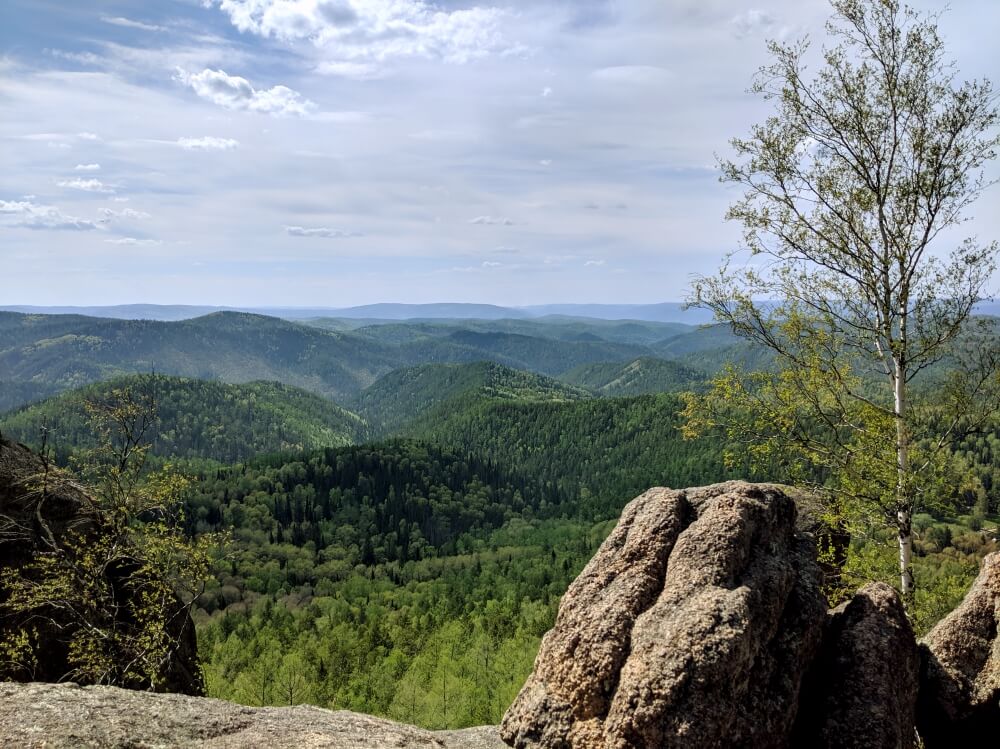
Stolby Nature Reserve
Next up on the itinerary was Krasnoyarsk. Krasnoyarsk is one of the biggest cities in Siberia. And almost definitely one of the nicest. I had literally 48 hours here, from Wednesday afternoon to Friday afternoon. The big draw here is the Stolby Nature Reserve, a beautiful forested area found a stone’s throw from the city and where I spent a very happy, sunny day hiking around the gigantic rock formations.
Within the city itself, there aren’t too many big sights or must-dos or sees, but the city is very likeable – it feels very young, has lots of open spaces full of people cycling, roller-blading or running and a whole host of independent coffee shops.
Read more:
6 reasons to visit Krasnoyarsk
Hiking in Stolby Nature Reserve
The train from Krasnoyarsk to Tomsk
Tomsk was a very difficult stop to work into my Trans-Siberian itinerary. The city itself is not directly on the train route and so getting there normally requires a change of trains in either Novosibirsk or the depressing-looking town of Tayga. However, every second day there is a (very slow) direct train which runs to Tomsk, which I was able to fit into my itinerary.
I can say nothing of the visual quality of the journey, as there was a gigantic storm that we passed through, meaning all I saw was lashing rain and blackness.
A glimpse of Western Siberia: 36 hours in Tomsk
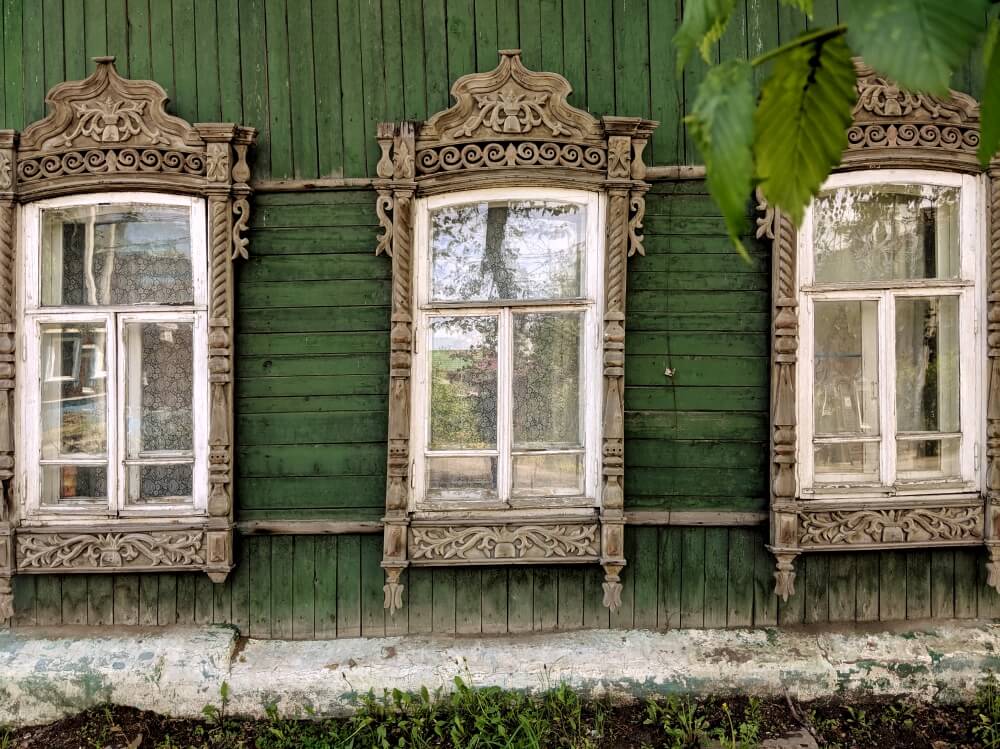
Wooden architecture in Tomsk
In hindsight, there was a lot riding on Tomsk – I’d spent a lot of time trying to fit it into my trip and then umming and ahhing about whether I should even stop here at all, before the stars all magically aligned. But luckily, I liked it. Tomsk is actually a pretty big city by most standards (524,669 people – just smaller than Sheffield) but pockets of it really do feel like a quaint rural village – and likewise, parts feel like a big bustling city.
I had 36 hours in Tomsk, which might have felt like a bit too long (24 hours is plenty) had I not met some cool people. The city’s main draw is its traditional wooden architecture and the fact that it was spared the aggressive Soviet industrialisation that happened in Novosibirsk, Krasnoyarsk and Irkutsk. Tomsk is essentially worth visiting to see a city in Siberia that developed a bit more organically.
Read more:
Is Tomsk worth the detour from the Trans-Siberian?
Train from Tomsk to Yekaterinburg
I was warned before hand that the closer you get to Moscow, the less interesting the scenery gets. (“A lot of trees,” is a direct quote.) The views on the way to Yekaterinburg certainly weren’t dull, but instead of valleys and mountains, there were a lot of meadows. Flat meadows. We also had a 90-minute stop in Novosibirsk, which was enough time to get off and grab a KFC. It was not good.
Last stop in Asia: 36 hours in Yekaterinburg
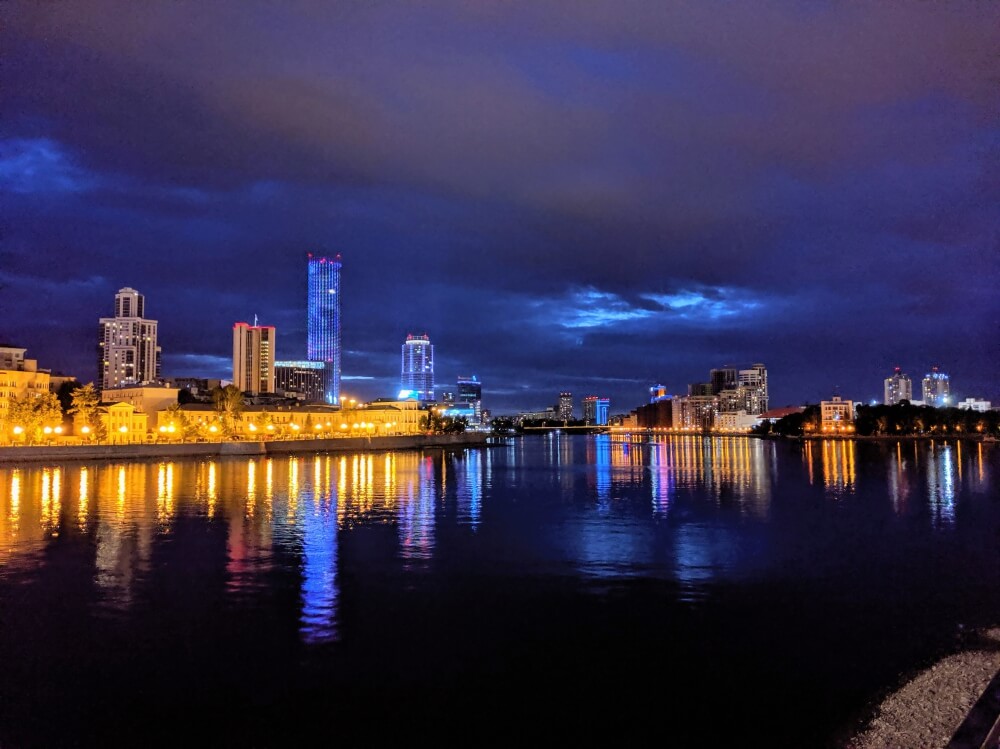
Yekaterinburg at night
Next up was Yekaterinburg, which along with Irkutsk seems to be a popular stop on many Trans-Siberian itineraries. I’d always wanted to visit Yekaterinburg – I even applied for a job here directly after uni but didn’t get it – and the city felt very liveable. It reminded me a lot of Manchester actually; a sense of rampant development in the air. There are skyscrapers being built around every corner and it seems obvious that soon it will be the third largest and third most important city in Russia.
Despite how likeable Yekaterinburg was, I did feel like I ran out of things to do quite quickly. I saw the city’s main sights on the red line tourist trail, including the Church on Blood and several very bizarre monuments (one of the QWERTY keyboard and another of the humble cheese grater), as well as a trip out to the border between Europe and Asia and a poke around a cemetery well-known for elaborate gangster graves.
Read more:
36 hours in Yekaterinburg: what to see and do
The train from Yekaterinburg to Perm
At just seven hours, this was my shortest train journey, which at some point passed seamlessly from Asia into Europe. But as bizarre as it sounds, you actually do see some differences – it suddenly felt like every tiny rural village now had a big shiny Orthodox church in the middle of it, as if the Ural Mountains had stopped the Church’s advance across Russia. On reaching Perm Krai, the track runs through a lovely valley with a gigantic surging river (Russia has some incredibly vast rivers) and beautiful views. There was also a lot of trees.
The first city in Europe: 48 hours in Perm
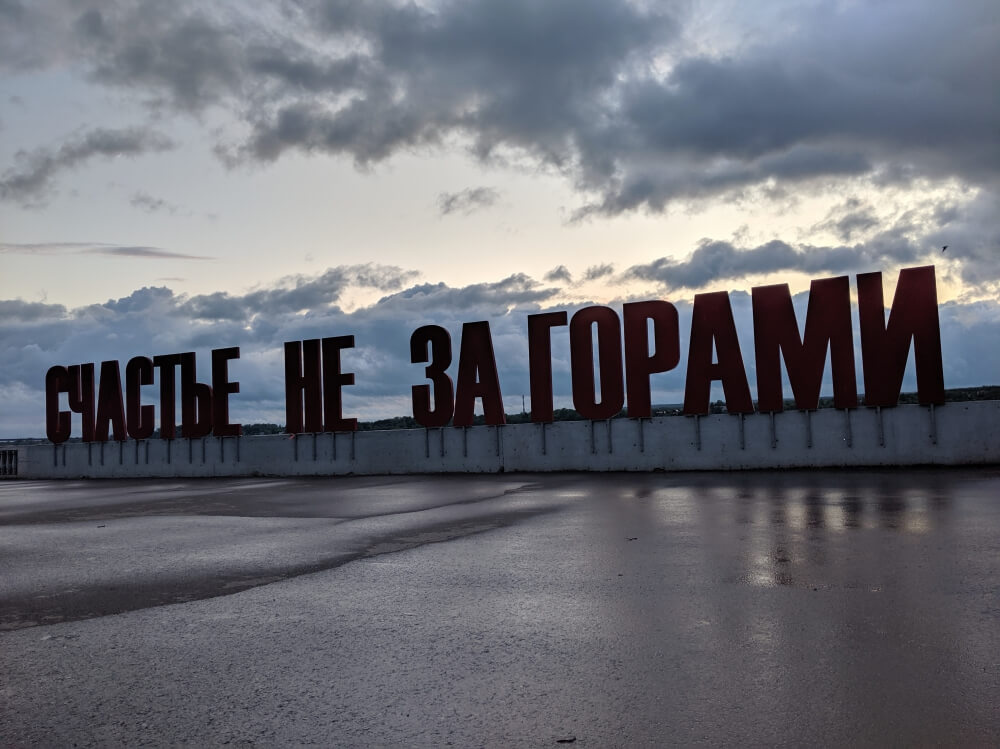
“Happiness is not far away”: the new symbol of Perm
I loved Perm. I really did. I had a great, sunny time exploring the city and a great, rainy time exploring Perm-36, the country’s only restored forced labour camp dating from the Soviet regime, with Evrasia Tours. I also had one of the best meals of my entire journey at RisLapsha (Rice and Noodles) and incredibly, Perm also has a Kölsch bar decked out in Cologne’s colours. The tourist information centre also gave me lots of cool free stuff.
Perm is known as the first city in Europe (or last, depending on your preference) and honestly, coming from Siberia and Asia, Perm’s distinct European-ness seems to hit you square in the face. Perm feels a lot older than a lot of places I visited and the city really does have a lot of pre-Revolutionary buildings, lining its wide avenues. There are definitely a lot of markers of the Soviet Union and its industrialisation, but the centre of Perm feels very European and Tsarist.
Read more:
13 reasons I loved Perm
Train from Perm to Moscow
This was my last and definitely least interesting train journey. I met a cool guy in the train so we spent a lot of time chatting and talking in a mix of broken English and very rusty Russian, but the scenery was really not that interesting and we passed through the more interesting towns (Nizhny Novgorod, Vladimir) at night. We did have a quick stop in the Udmurt Republic though, home to the singing Russian grannies from Eurovision 2012 – a personal highlight.
End of the line: two days in Moscow
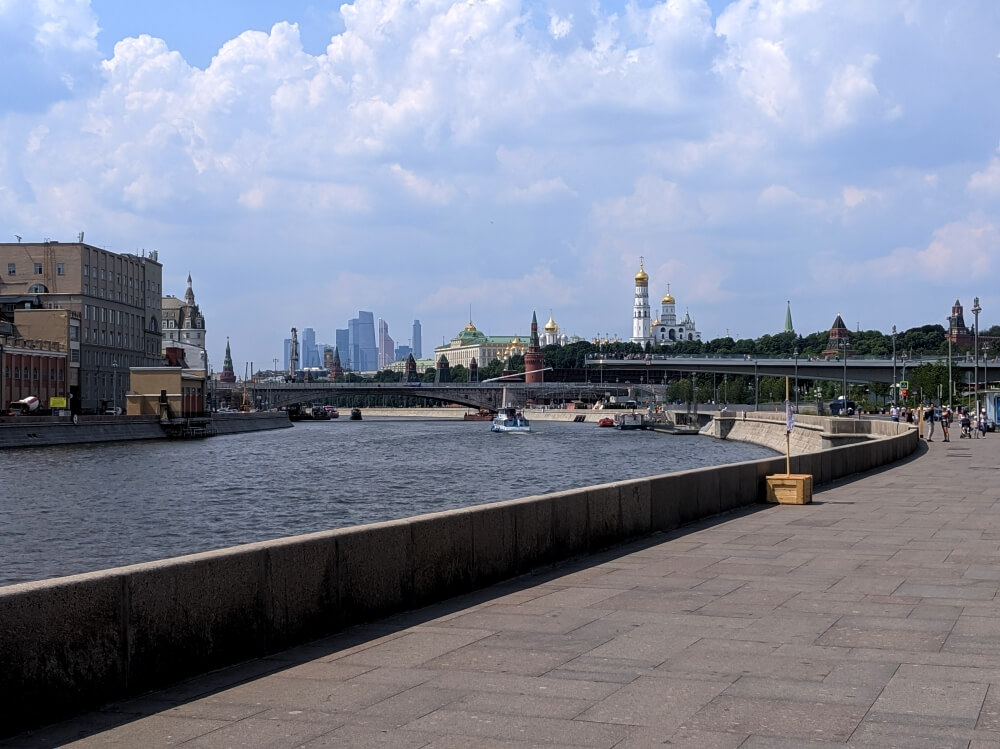
Cycling along the Moskva river in 32 degrees
Despite having never really blogged about it, this was my fifth time in Moscow. As a result, my time there was quite relaxed. I visited the Gulag museum, which was genuinely incredible and a very moving experience (something I did not expect in a country that has a hard time viewing the Soviet Union in a negative light) but I tried to spend the majority of my time outdoors as it was a blistering 32 degrees. Turns out Moscow is now very big on cycling, so I hired a bike and did a nice 20-km cycle along the Moskva river before chilling in the super cool Gorky Park.
From Moscow, it was then a very quick flight home direct to Cologne with budget airline Pobeda, which cost me only €50! (Plus an extra €25 for check-in baggage, but still…)
Read more:
First-time guide to Moscow: 10 essential tips
My Trans-Siberian itinerary: how was it?
As I mentioned before, this trip required a whole lot of organisation. I knew that three weeks was a relatively short timeframe and so I wanted to get everything planned and booked beforehand so I wouldn’t have to waste any time when I was on the ground. And I have to say, everything worked out perfectly. I didn’t miss a single train (thank God), but more importantly, I felt like I used my time really well. In short: I bloody loved it. And I will be doing it again.
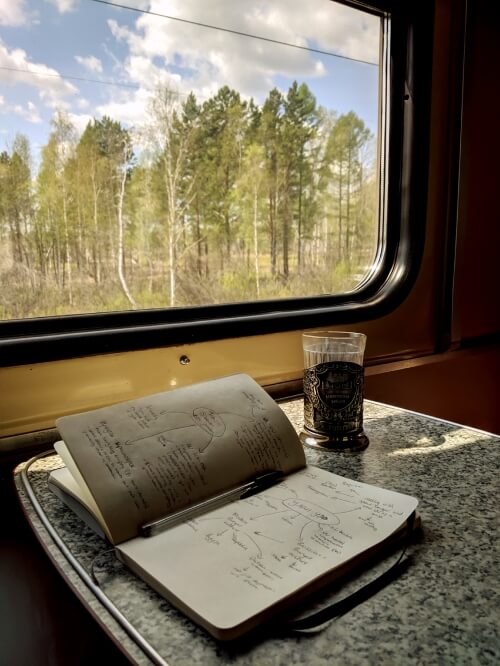
Timing: the Trans-Siberian in three weeks
For a three-week trip, I would totally stand by my itinerary. But three weeks is actually a pretty short time to cover the entire breadth of Russia, especially if it’s your first visit. I was lucky in that I already had a good sense of things I had seen a lot of in Russia (i.e. churches on the Golden Ring) and so felt happy skipping some highly-rated destinations (i.e. Suzdal and Vladimir).
If I had had another week to play with, I would have focused on regions that had a good infrastructure set up for day trips. I would have spent three more days in the Buryat republic, taking in the Eastern shore of Lake Baikal and the Barguzin Valley, with at least one day of hiking. I also would have added another day in Yekaterinburg to go hiking in the Deer Springs national park, as well as a day in the Perm region to visit the Kungur Ice Caves. I would have enjoyed an extra day in Vladivostok too, to see more of the coast – either Russky Island or the beaches at Nakhodka.

Me on arriving in Moscow
Also check out: Why you should visit Russia in winter
Travelling the Trans-Siberian solo: the pros and cons
Doing this trip alone was a conscious decision I made. I didn’t want to have to compromise on my itinerary and I wanted to feel free to meet people during the trip and speak with them in Russian (something that’s a bit harder to do if you have to translate for a friend). This was the longest solo trip I’ve ever done and I was a bit nervous beforehand, but it really was fine. I didn’t once feel awkward or lonely.
However, the big drawback to travelling alone was the opportunity to do day trips. Now I love a good daytrip: it’s a great way to see the surrounding area or landscape (and who doesn’t love being ferried around in a car for a day?) but what surprised me in Russia was the sheer price of the day trips in some places. That is until I realised that on all other tours I’ve done, there were at least four of us – or a busload of tourists. This was the price for a private tour for just me and was therefore pretty reasonable, but still simply out of my price range. It was a real shame and something to consider if you’re planning the same trip.
East to West: from Vladivostok to Moscow
I chose to fly out to Vladivostok and travel back to Moscow. On reflection, I am still really happy I made this choice; several of the trains I took were partially or even half empty, I didn’t meet a single other foreigner on any of my train journeys (although this could have been down to the time of year) and it was a very quick flight home at the end of my journey.
Moscow is also a pretty exciting place to finish your trip – there is a hell of a lot to see and do, but you don’t have to work hard to enjoy the city; there are great cafes, bars, restaurants and pubs everywhere and simply walking around the centre is a fantastic experience. The downside was dealing with jetlag in Vladivostok, but in hindsight, this is something I should have prepared for.
Also worth a read: Why now is the perfect time to visit Russia (written in 2015 but still relevant!)
My Trans-Siberian itinerary in brief
| Day | AM | PM | Overnight | Timezone |
| 1 | Depart DUS at 1045 | In transit | On the plane | – |
| 2 | Land VVO at 1005 | Vladivostok | Vladivostok | GMT +10 |
| 3 | Vladivostok | Depart at 1910 | On the train | GMT +10 |
| 4 | On the train | On the train | On the train | GMT +9 |
| 5 | On the train | On the train | On the train | GMT +9 |
| 6 | Arrive Ulan-Ude 0830 | Ulan-Ude | Ulan-Ude | GMT +8 |
| 7 | Depart 0730 | Bus to Listvyanka | Listvyanka | GMT +8 |
| 8 | Lake Baikal | Lake Baikal | Listvyanka | GMT +8 |
| 9 | Lake Baikal | Lake Baikal | Depart at 0000 | GMT +8 |
| 10 | On the train | Arrive Krasnoyarsk 1554 | Krasnoyarsk | GMT +7 |
| 11 | Stolby Nature Reserve | Stolby Nature Reserve | Krasnoyarsk | GMT +7 |
| 12 | Krasnoyarsk | Depart 1624 | On the train | GMT +7 |
| 13 | Arrive Tomsk 0736 | Tomsk | Tomsk | GMT +7 |
| 14 | Tomsk | Depart 1302 | On the train | GMT +7 |
| 15 | On the train | Arrive Yekaterinburg 1344 | Yekaterinburg | GMT +5 |
| 16 | Yekaterinburg | Yekaterinburg | Yekaterinburg | GMT +5 |
| 17 | Depart 0644 | Arrive Perm 1351 | Perm | GMT +5 |
| 18 | Perm-36 | Perm | Perm | GMT +5 |
| 19 | Depart 1154 | On the train | On the train | GMT +5 |
| 20 | Arrive Moscow 0552 | Moscow | Moscow | GMT +3 |
| 21 | Moscow | Moscow | Moscow | GMT +3 |
| 22 | Depart 0810 | – | – | – |


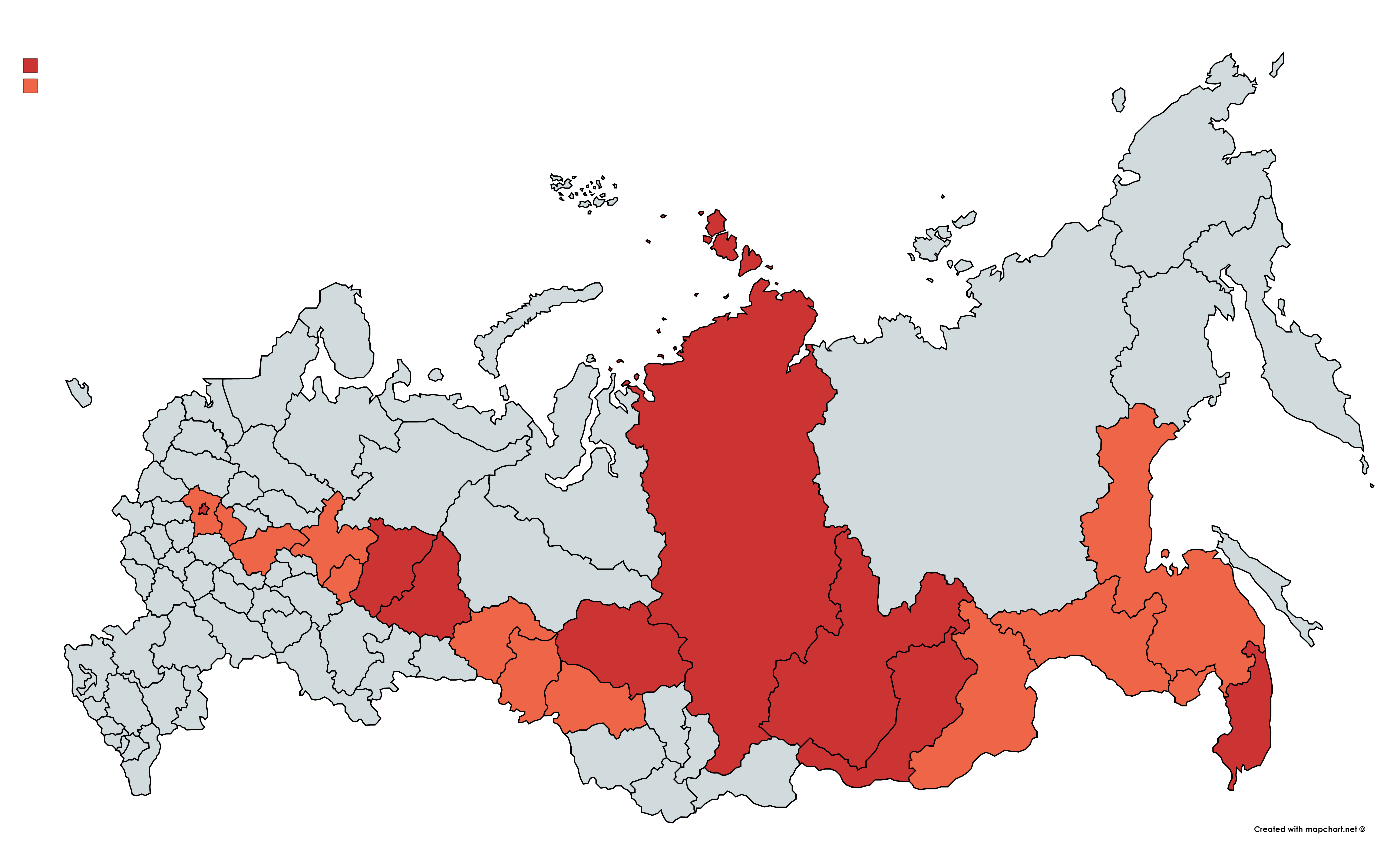
Nice! Just did mine from Singapore to Moscow via Beijing this April in a relatively short time of 23 days by buses and trains.
Oh wow, that sounds like quite the journey! Did you make many stops along the way?
This is still insane to me, but I am glad you loved it. I am disapointed that you didnt love Baikal – it’s pretty much the ONLY place on your itinerary that I want to visit. And that I missed you in Moscow, of course! Hope you’ll be back one day 🙂
(PS – I finally blogged, after a multi-ear hiatus!)
Baikal was a tricky one, because I did love being there and I did love the hike, it’s just Listvyanka was very… meh. My second day there was the only time I felt like I was wasting my time.
https://gohomeandaway.wordpress.com/2019/06/24/checking-in-with-my-travel-wish-list/
Exciting! I didn’t get a notification though – is there an email list I need to re-sign up to?
there should have been, but nobody did – I feel like, maybe it all went dead bc of my super long hiatus?
Hi, John! Most of the things you wrote are true!
Confirm it as a person living in Russia and organizing TransSiberian tours :))
For those who want to travel by themselves – your post is very helpful.
But if someone prefers to get a tour instead self travel, I leave here the link to our Trans-Siberian tour. I hope it’s also helpful for someone. 🙂
https://altai-touristic.ru/eng/trans-siberian-tours.html
Thanks for your comment, Artem! It looks like you have a great selection of tours! 🙂